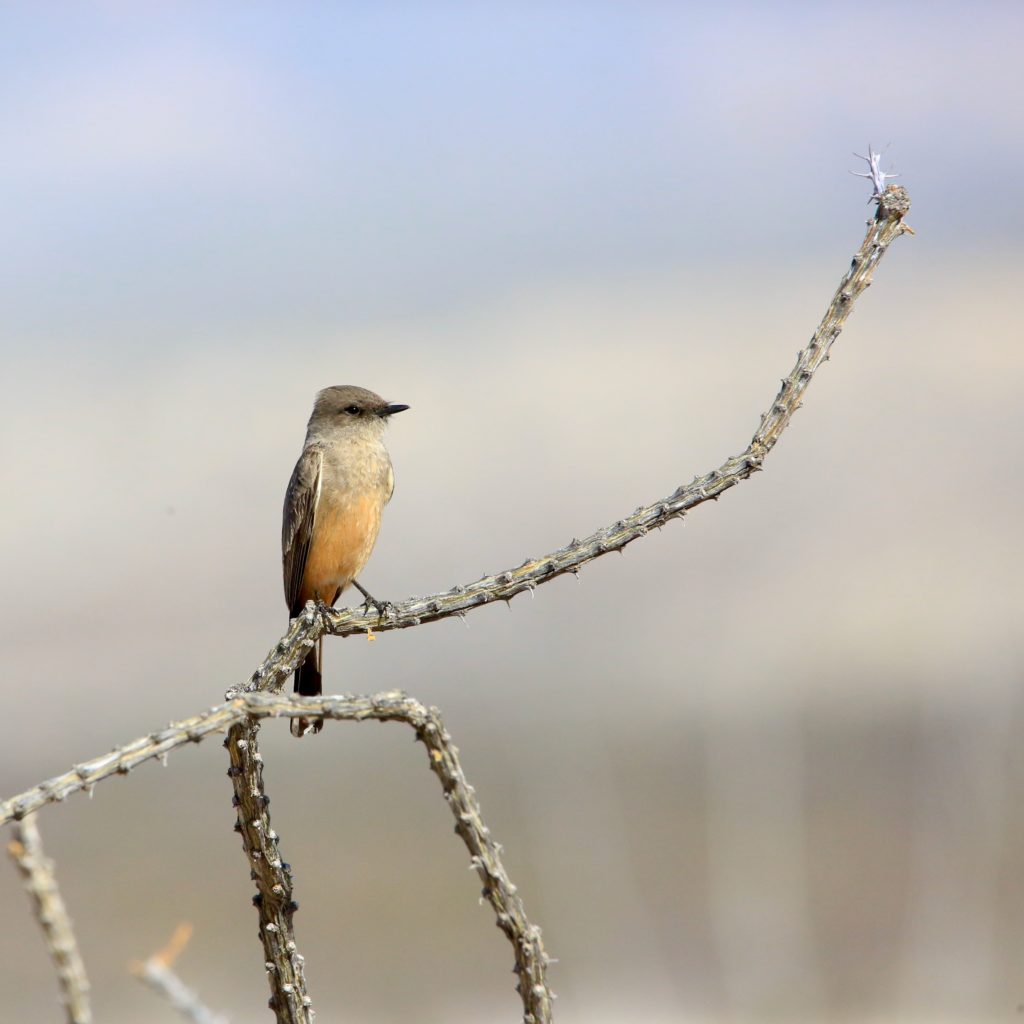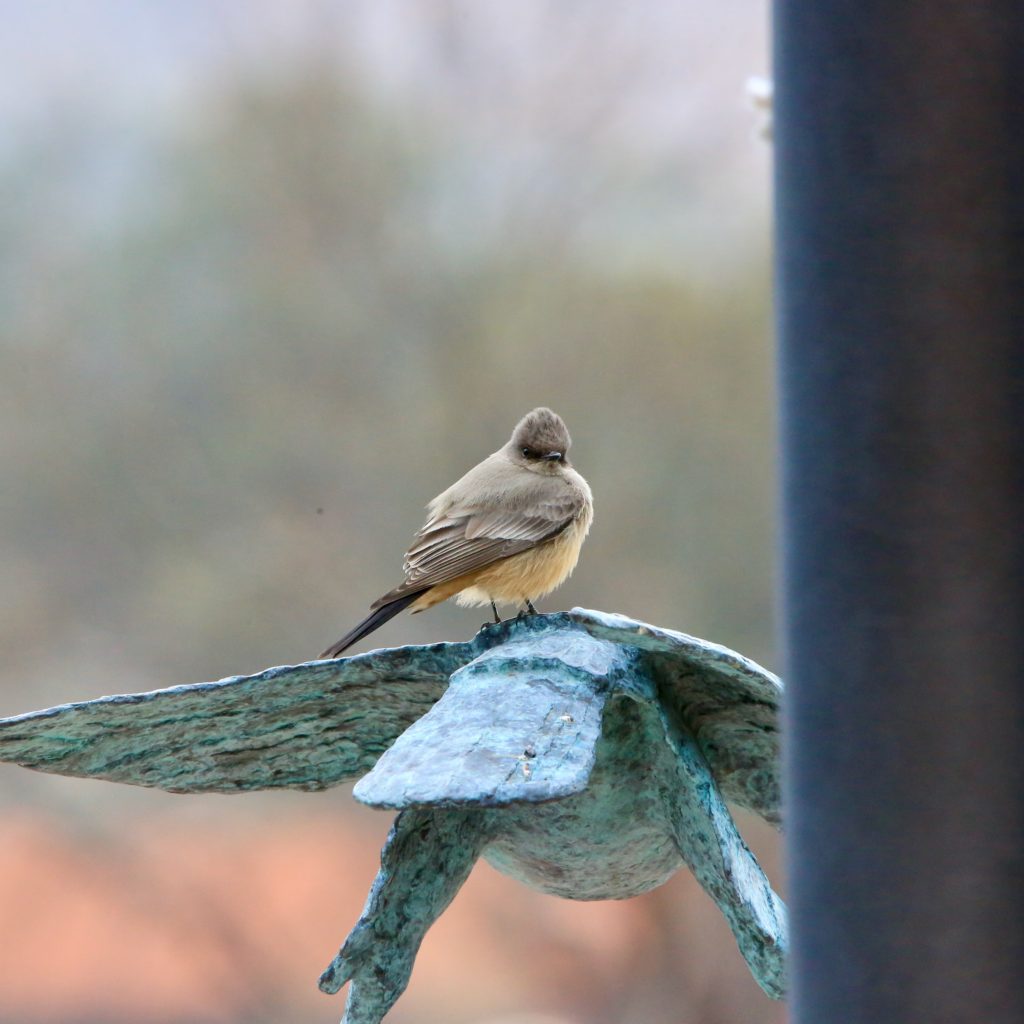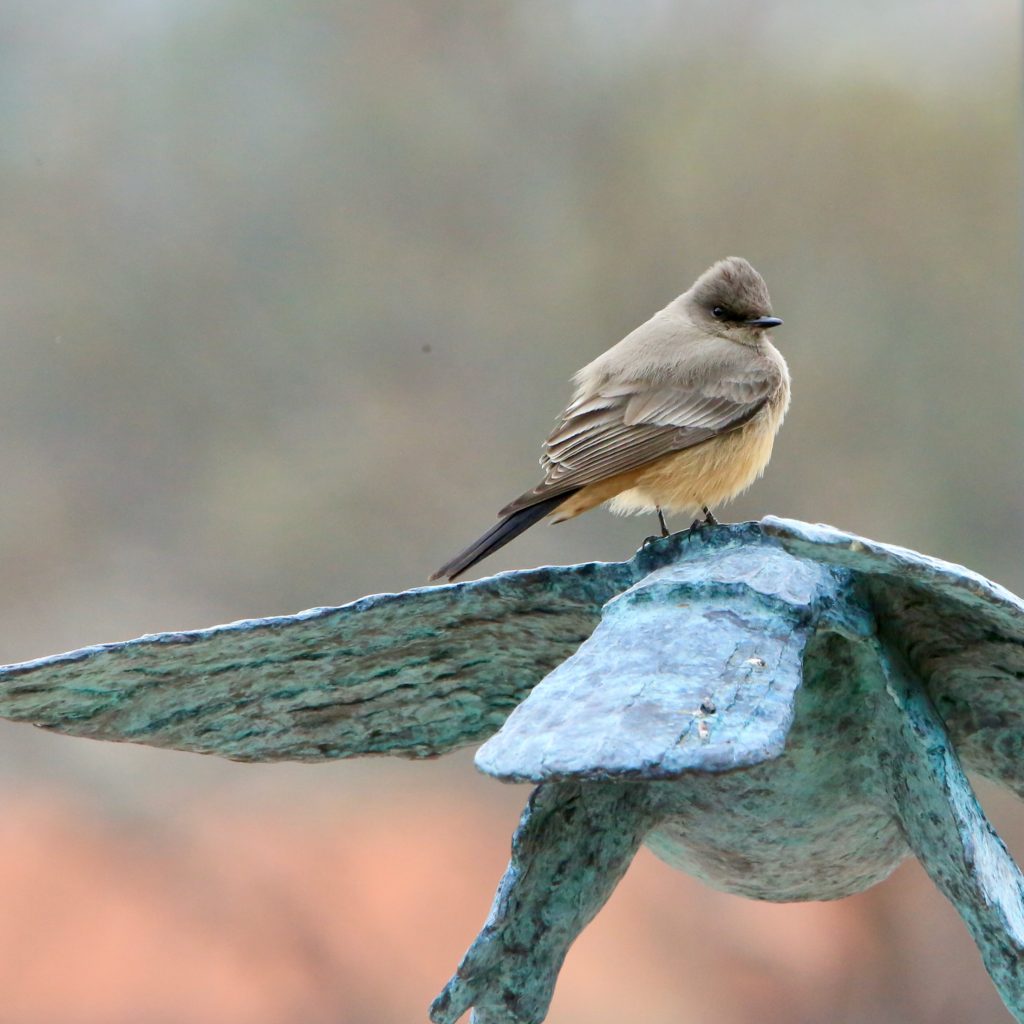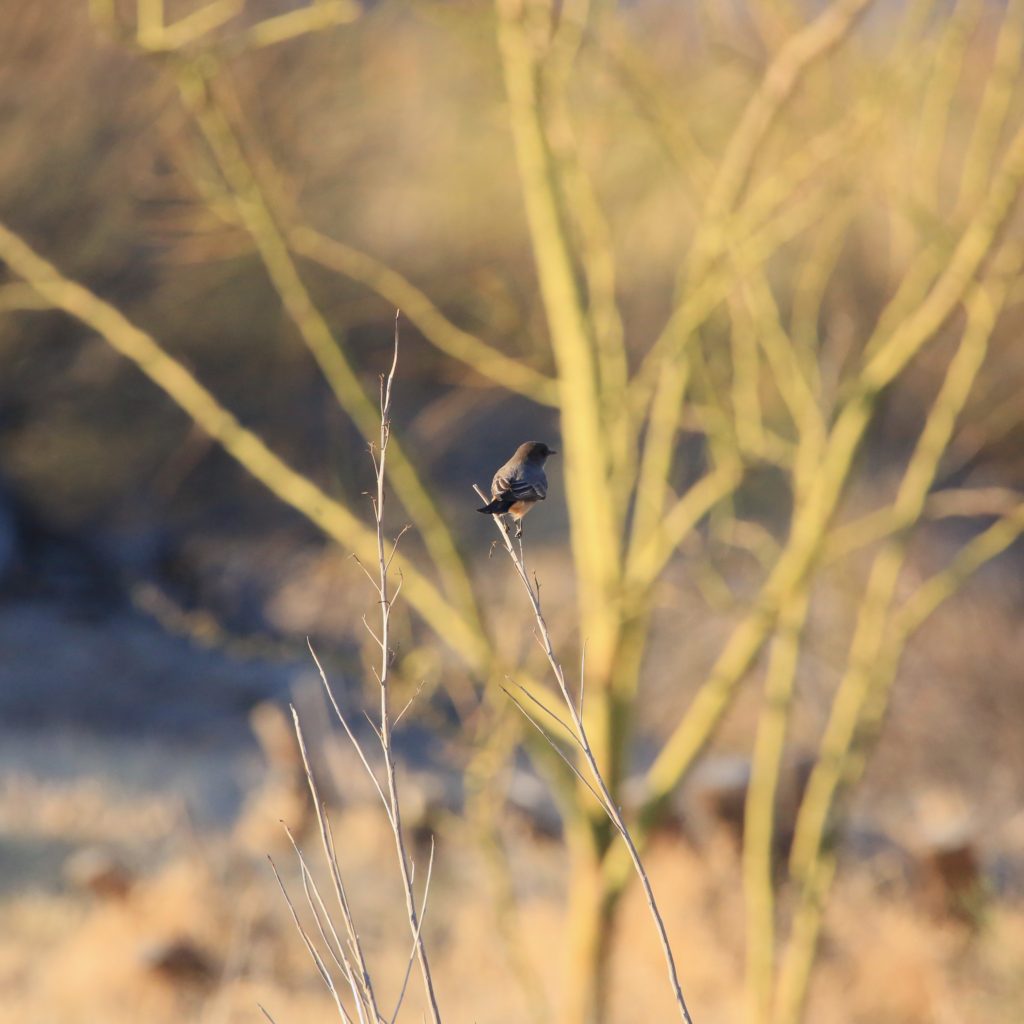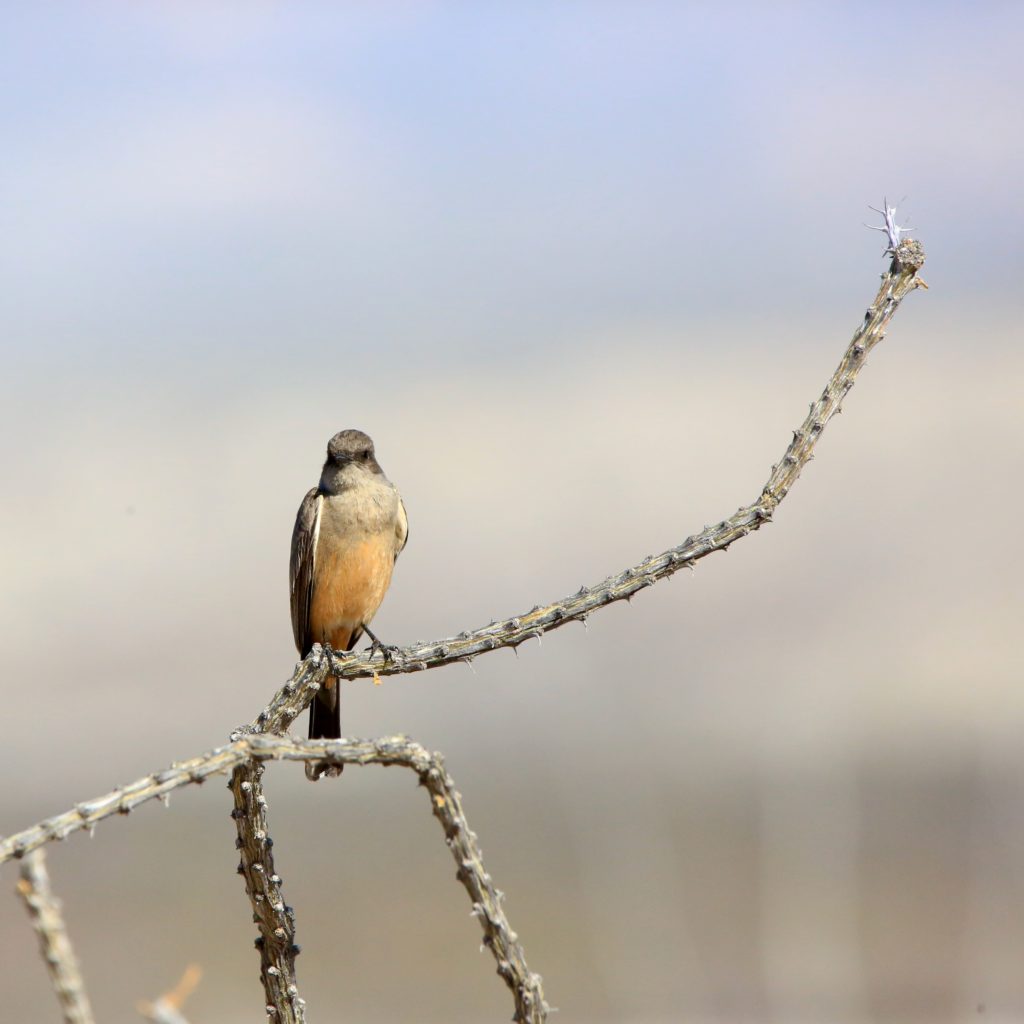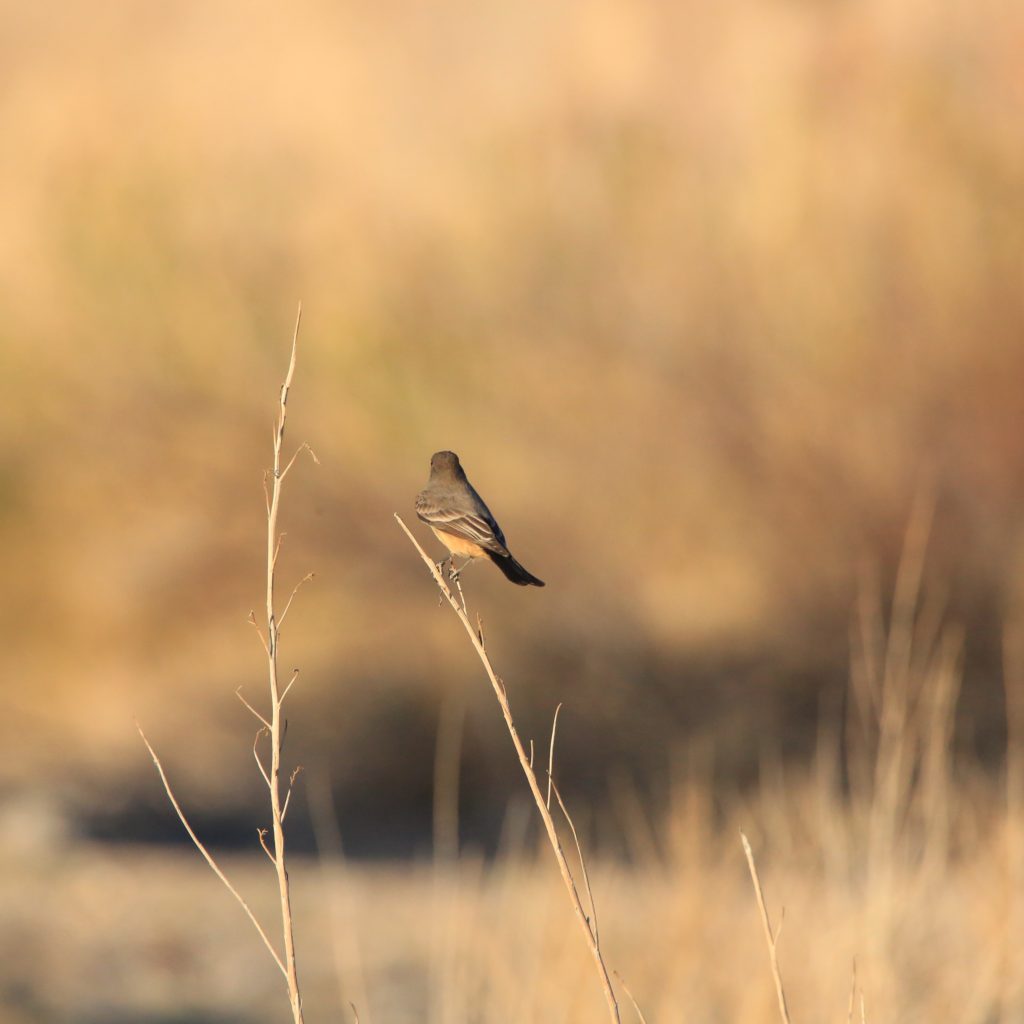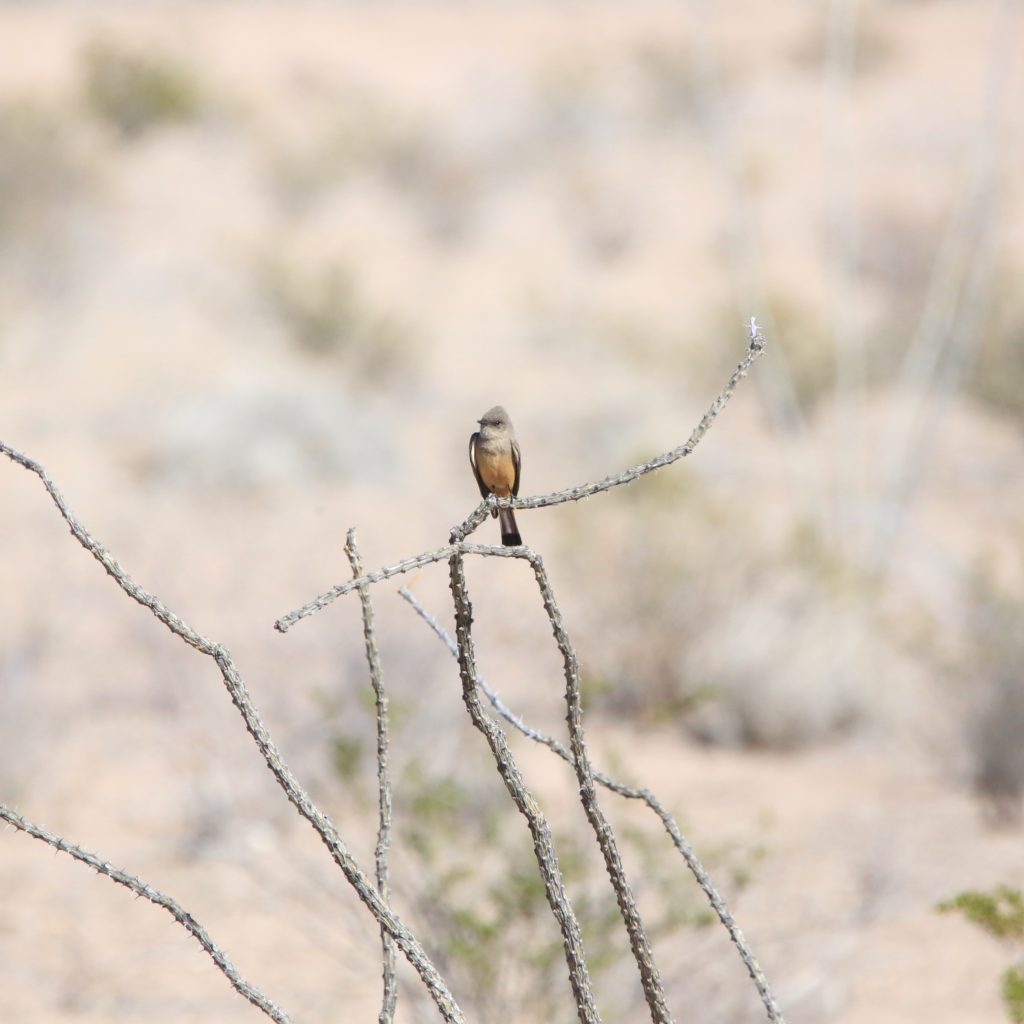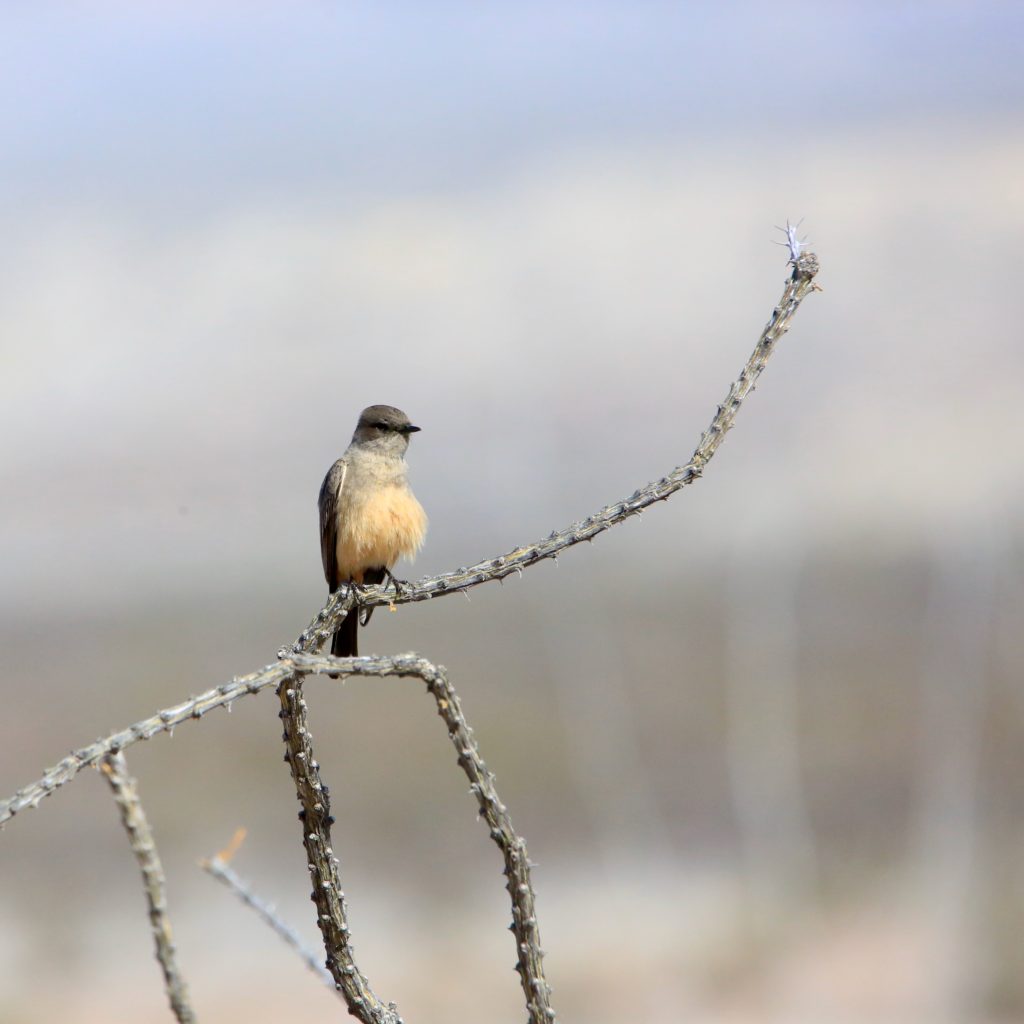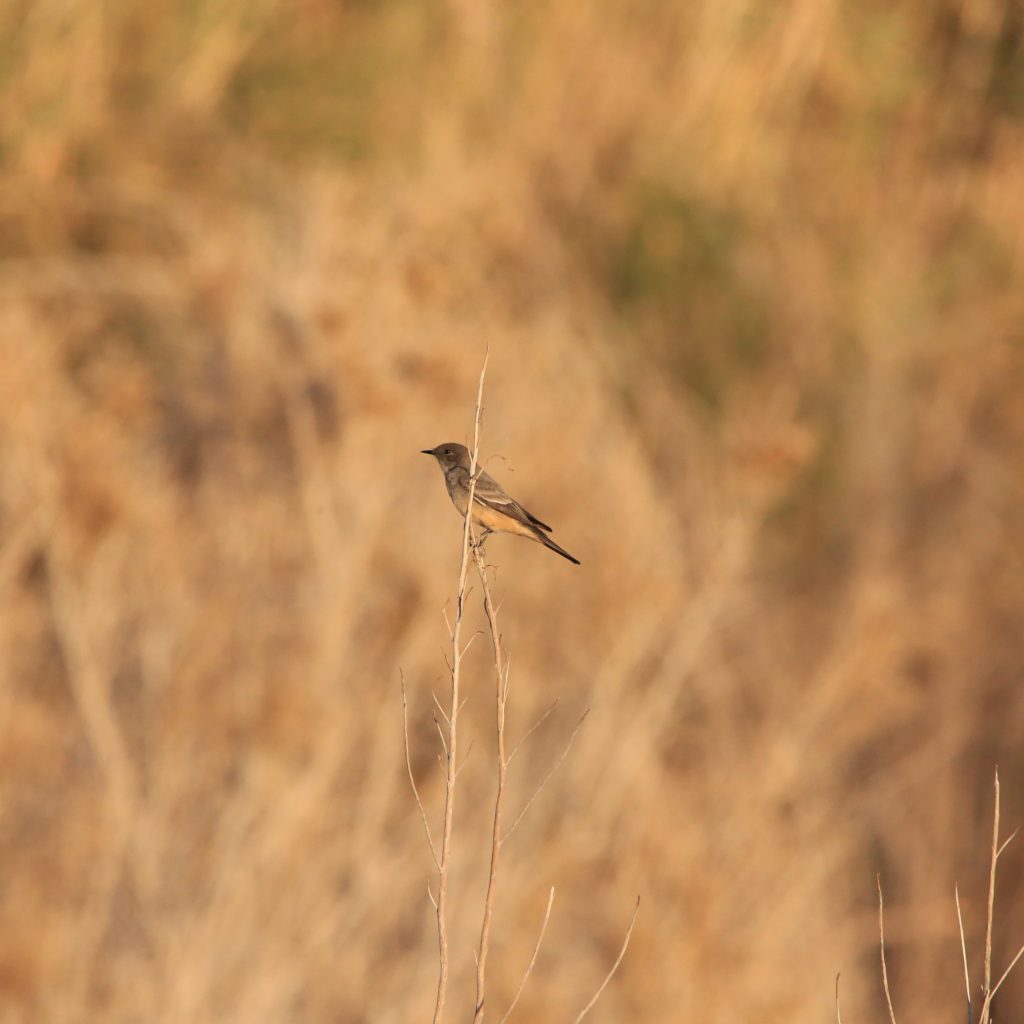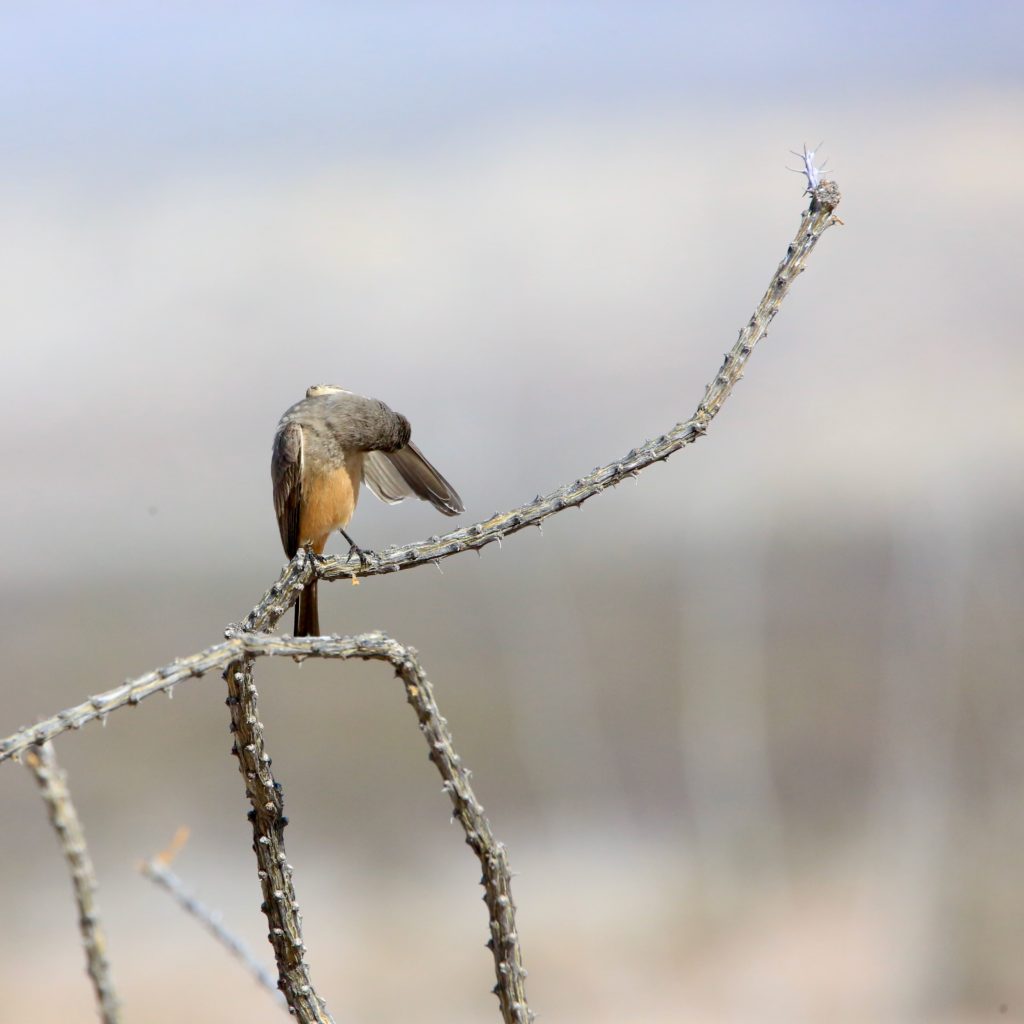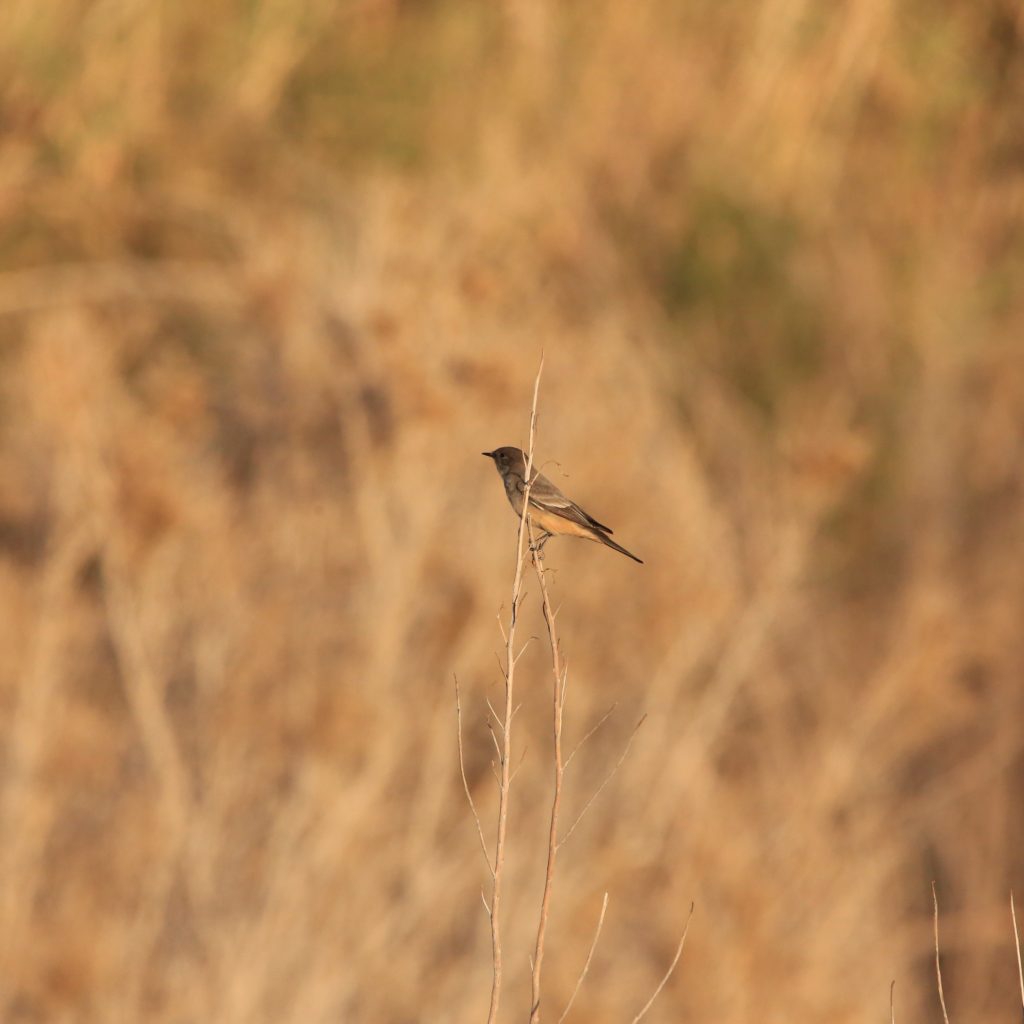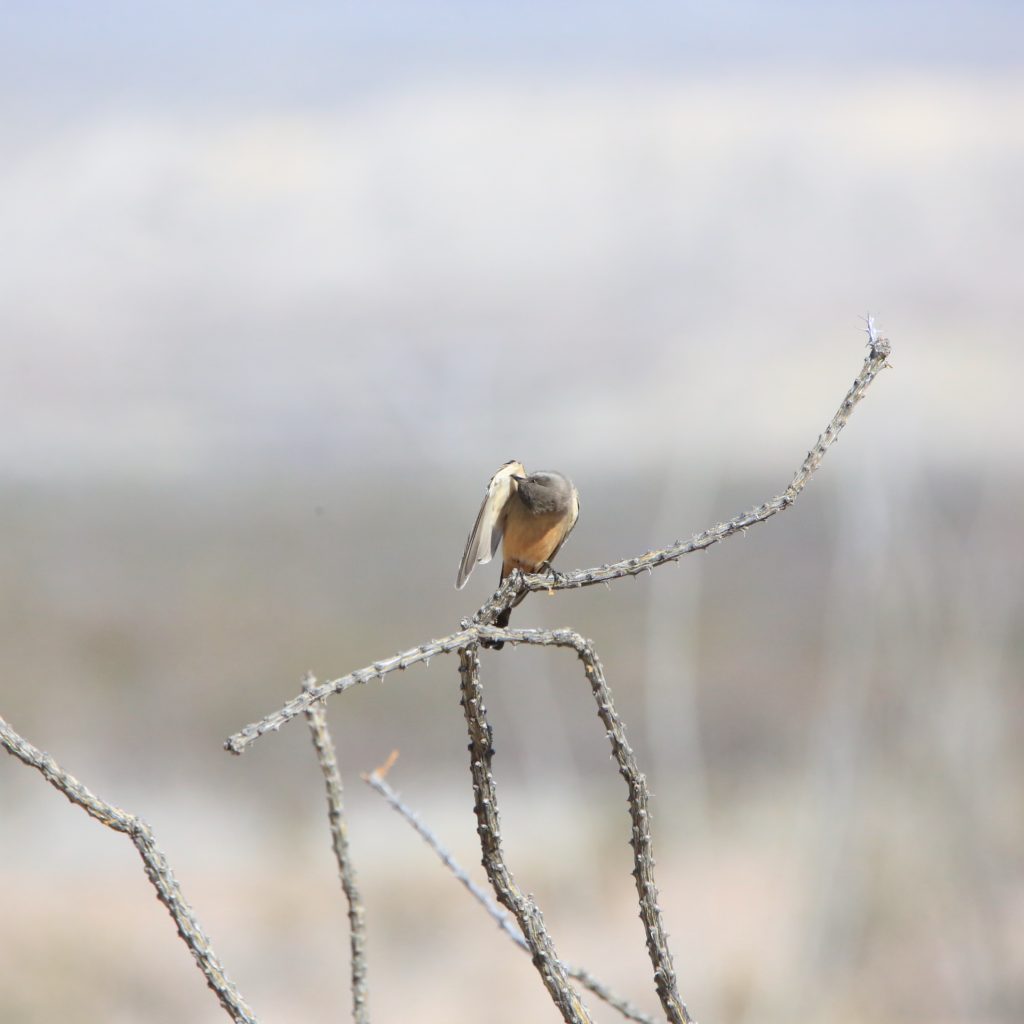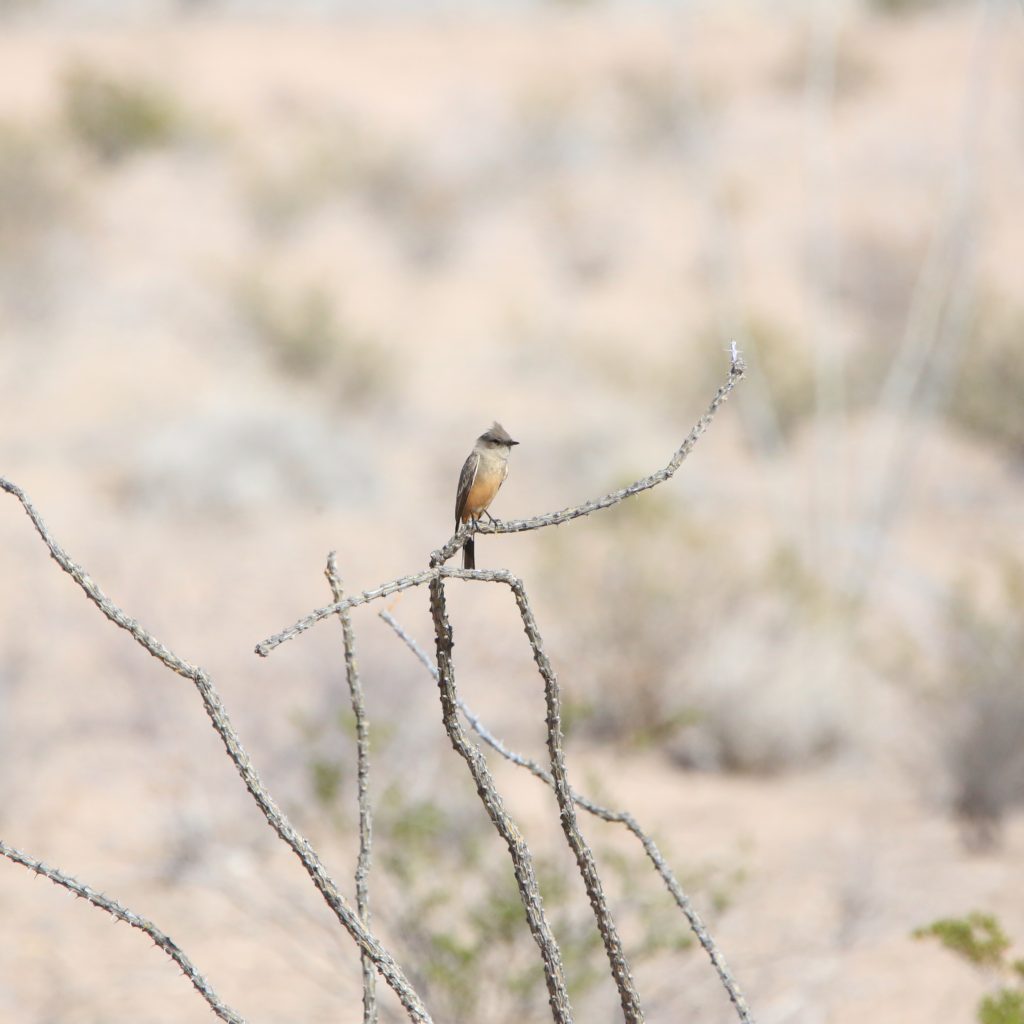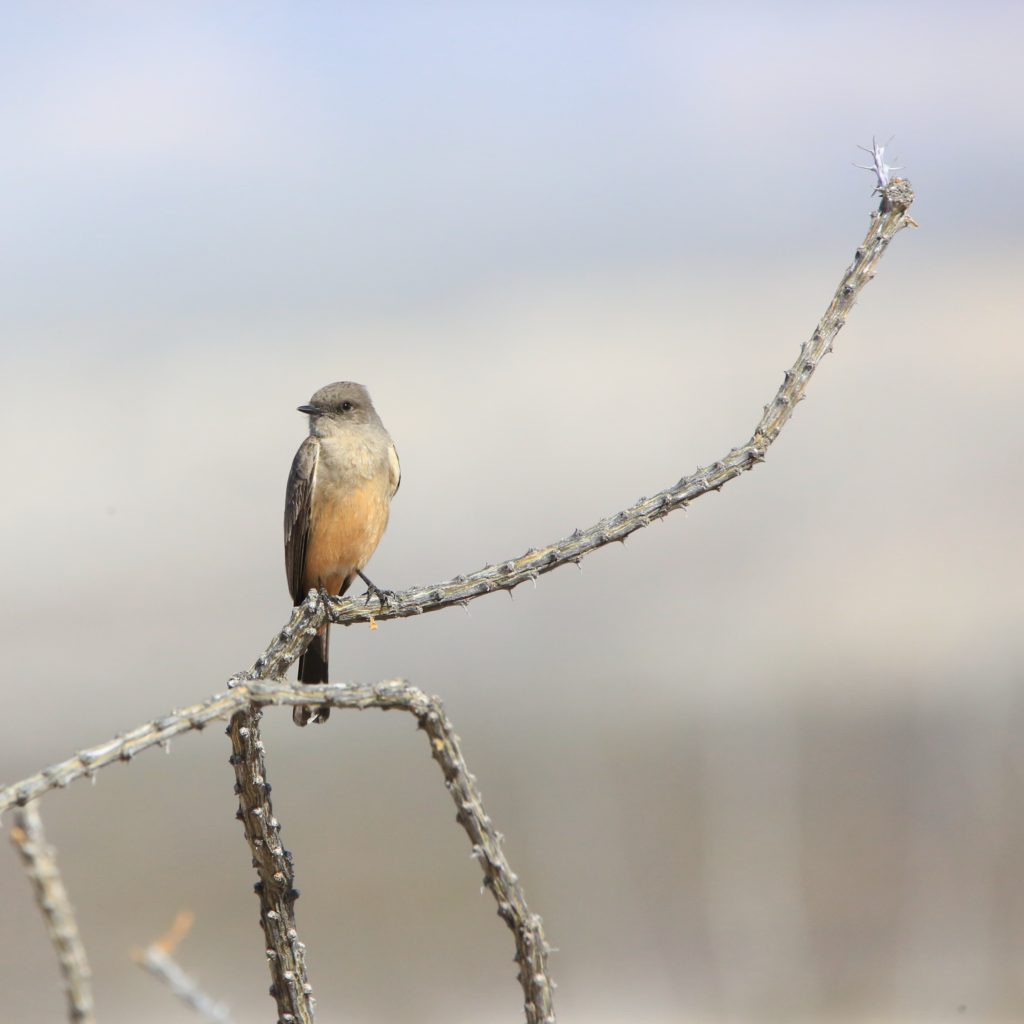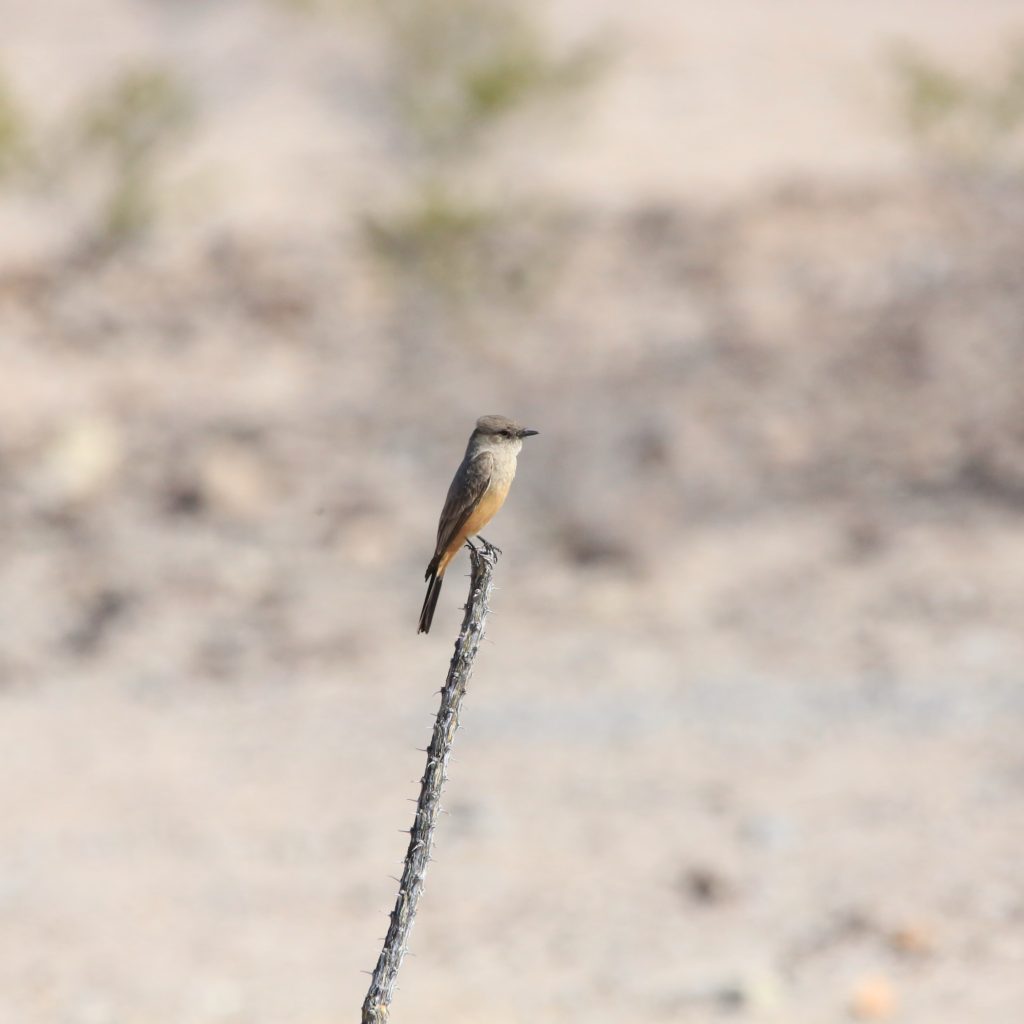
Named after the American naturalist Thomas Say, the Say’s Phoebe is an incredibly fascinating bird. They are one of the best examples of wildlife adaptation to human urbanization. Commonly found in open country, these birds have evolved to build their homes in manmade structures in a way that protects themselves and their young ones.
About Say’s Phoebes
There are two subspecies of these birds with no significant differences between them. However, much information we have on them comes from the research on other Phoebes, so further study is crucial for us to know this bird better.
Let us dive in! In this blog, you will learn about:
● Say’s Phoebe Photos, Color Pattern, Song
● Say’s Phoebe Size, Eating behavior, Habitat
● Say’s Phoebe Range and Migration, Nesting
GET KIDS BIRD WATCHING
Say’s Phoebe Color Pattern
Adult Say’s Phoebes have pale brownish-gray upper parts. Their heads and hindnecks are a darker shade of brownish gray. Their tails are brownish-black, and they have white outer webs on their outer rectrices. Say’s Phoebe’s wings are a deep brownish-gray, and their chins, throats, and upper breasts are a buffy-hued brownish gray. The different shades of brownish-gray on their bodies make their contours distinctive. Their bellies and under tail coverts are cinnamon-brown, a common trait among North American Flycatchers.
Adult males and females of this species display almost identical color patterns, save for breeding season. Males develop cloacal protuberances (around their singular posterior openings), and females develop brood patches.
Juvenile Say’s Phoebes also follow the basic adult plumage but have browner upperparts and cinnamon brown margins on their median and greater wing coverts, which give the appearance of two distinct wing bars. Rectrices in juveniles are also buff when they first appear.
There have been rare sightings of partially aberrant plumage, with records of partial albinism in Phoebes from southern British Columbia.
.
Description and Identification
Say’s Phoebes are often mixed up with Eastern Phoebes. However, Eastern Phoebes have pale gray shading on their underparts with darker gray upperparts. Black Phoebes may be mistaken for Say’s Phoebes to an amateur watcher. However, if you look close you will see they have black bodies with contrasting white bellies, and are slightly smaller in size.
Female and juvenile Vermillion Flycatchers have a similar color palette but have pale supercilia (vertical strips running from their beaks to the backs of their heads), whitish throats and chests, and dusky streaks all over their bodies. They also lack the distinct cinnamon-brown belly and contrasting tail of Say’s Phoebes.
Cassin’s and Western Kingbirds look similarly yellowish gray to Say’s Phoebes in bright daylight but keep in mind that these Kingbirds have dark masks, yellow bellies, olive-gray upperparts, and thicker, heavier bills. Overall, Say’s Phoebes have a redder hue than these two Kingbirds.
Say’s Phoebe Song
The various vocalizations of Say’s Phoebes must be studied more in-depth. Our knowledge of these birds is heavily dependent on research on other Phoebes, the Eastern and Black Phoebes in particular.
Their Primary Call consists of 2 RRVs or Regularly Repeated Vocalizations. These can sound like “pit-tsee-eur”, followed by a “pit eet”. The adult female of a pair may give out this call along with chatter during the nest site showing the display in the context of sexual activity. You can usually hear this song from predawn onwards, and in any early morning song bouts. This is most heard in early spring and breeding season. It is commonly used for countercalling and patrolling the habitat.
The Initially Peaked Vocalization is their most recorded song, used in all song bouts and more frequently than Regularly Repeated Vocalizations. It sounds close to a “Phee-eur, Phee-eur”, repeated several times at regular intervals. Here again, the birds alternate this with chatter. Nestlings and fledglings use this as a begging call when
they are hungry. It also has many purposes for adults- during morning song bouts, to locate each other, to get the other’s attention for mating, while foraging, etc. It also has aggressive and agonistic uses. Variations of this call are used throughout the year.
The Chatter Vocalization, is used intermittently with the RRVs and Initially Peaked Vocalizations by both sexes. During intercourse, it is used during mounting. They also use it during pair formation, in between nesting, roosting and incubation sessions.
Say’s Phoebe Size
Across sexes and geographic populations, the average length of adult Say’s Phoebes is about 6.7 inches, and the average body mass is 0.74 to 0.77 ounces.
Say’s Phoebe Behavior
Being Flycatchers, they primarily locomote by flying. They may perch on the ground to forage for insects but seldom hop around. Their flights are smooth, direct movements with periodic wing beating and zero undulation in the path of their flight. We will discuss their foraging behavior in more detail soon.
They like to roost on top of their nests or any adjacent structures, manmade or natural. There are several records of them roosting on mine shafts and buildings. Similar to other Phoebes, their habit of roosting in enclosed, protected areas may be an evolutionarily adopted habit to save energy and body heat in relatively cold climates.
Further research needs to be done on the interactions within populations of Say’s Phoebes. They communicate through vocalizations and non-verbal gestures the most at the start of the breeding season, and seldom engage in physical contact with members other than their mates.
Adult females physically push away their chicks once they have fledged the nest, especially between broods. Females of this species are also highly defensive of their nests and may kick intruders of other species that approach the nest.
When perching, these Phoebes wag and pump their tails, but not as much as Eastern and Black Phoebes do.
Say’s Phoebe Diet
Their diet consists almost entirely of insects. They feed heavily on any edible insect available, such as wild bees, ants, wasps, beetles, moths, crickets, grasshoppers, dragonflies, etc. They also enjoy arthropods and millipedes. Across populations, the Pallid-Winged Grasshopper seems to be a favorite food of theirs.
Annually, they consume negligible amounts of vegetable matter, but they do enjoy berries occasionally.
Being members of the Flycatcher family, they can catch their food mid-air or hover close to the ground to find and prey on their desired feed. They also perch on low-lying rock or shrub and rapidly dart to capture flying insects. They can make quick dips from spots of moderate elevation to the ground to capture insects. Say’s Phoebes cough out the indigestible remains of insects.
Say’s Phoebe Habitat
Say’s Phoebes gravitate towards the open country, sagebrush, prairie ranches, dry barren foothills, canyons, badlands, desert borders, etc. Like other Phoebes, they avoid watercourses, heavily forested land, and rich agricultural lands.
For foraging, they need structures on the terrain of high elevation for them to perch and hunt. This becomes a priority while choosing their territory. They may even choose buildings. Canadian habitats include bushes, fences, low rocks, earth hummocks, and buildings. In British Columbia, they inhabit semi-arid areas of open forests, alpine cliffs, vegetation surrounding buildings, etc.
In California, you can see these birds in arid spots of valleys characterized by grasses, shrubs, and occasional scattered trees, agricultural lands, grassy coastal bluffs, and xerophytic desert scrub.
These birds maintain their habitats for up to 4 consecutive years unless forcefully moved.
Range and Migration
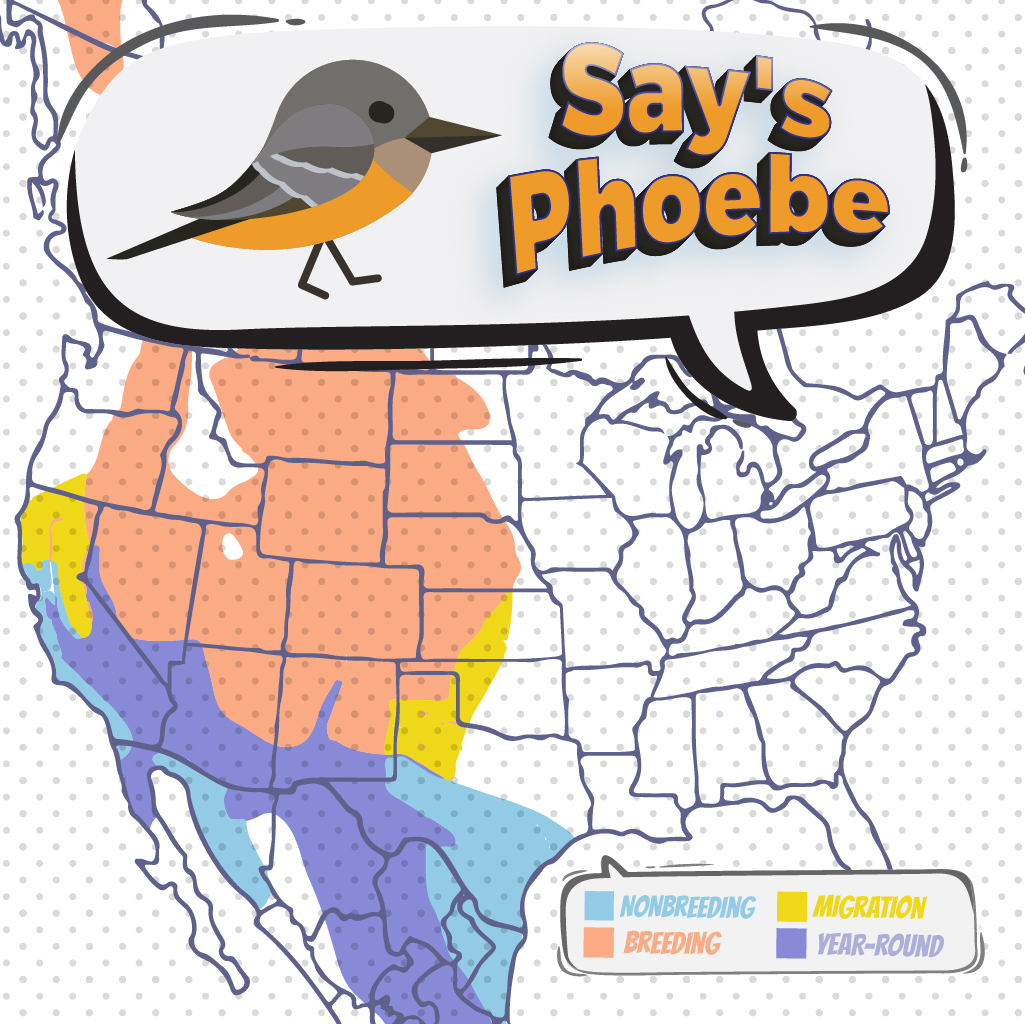
Populations in southwestern America (USA) are non-migratory. The other populations of this bird are short to medium-distance migrants.
They migrate northward and to areas of higher elevation in early spring, relatively earlier than the Spring migration of other Flycatchers. In the Great Plains and western parts of North America, they can arrive as early as late February and peak in volume by mid-March. Mid-March is also the median date for arrivals in Texas and New Mexico. In southwestern Oklahoma, they begin arriving in late March. Birds migrating to Kansas, Nebraska, Wyoming, North Dakota, South Dakota, and Alberta arrive in mid to late April.
In the fall, they shift to the Atlantic Coast, but this is a rare occurrence. Populations from Alberta and Oregon depart in late August to early September. In North Dakota, South Dakota, Wyoming, Nebraska, Oklahoma, and the Texas Panhandle, their latest departure is in late October. California populations depart mid-August to mid-September. Populations in British Columbia migrate from the coast to inland, but there is no recorded median date for this.
Say’s Phoebe Lifecycle
There is a considerable scope for research on the phenology of their development. A single clutch usually consists of 4-5 matte, pure white eggs. Intervals between laying are usually 1 day but can take up to 2. Incubation can take 12 to 18 days. The hatchlings emerge with their eyes shut and bodies naked save for a light gray down. Fledging can occur from the 17th day to the 21st day after hatching.
There is little information on the process of pair formation. We know that adult males arrive before females from spring migration, and they form pairs shortly after their interaction.
Nest building can begin the day of arrival to a week after. Depending on the day of arrival of the female, the pairs can begin anywhere from March to mid-May. The process of nest building is based on information we have about Eastern and Black Phoebes. Females primarily build nests in the Phoebe family, mostly during the mornings and early afternoons. The entire process takes an average duration of 5.3 days. The first egg can be laid at the earliest on the 14th day after the initiation of the nest construction.
Their average lifespan is unknown, but is similar to the Eastern and Black Phoebes of 8 to 10 years.
Nesting
The nest itself has a foundation of rocks, weed stems, wood, dry grass, hay, moss, plant fibers, wool, cocoons, sage bloom, cobwebs, and animal or human hair. In rare circumstances, the birds make do with mud or fecal matter. The nest is lined with more wool, hair, natural or manmade fiber, paper, and sometimes feathers. The nests are so dense in fibers that new fledglings sometimes get their legs entangled.
The nest cups are circular, but the foundations take shape depending on the materials used. The nest bases can accumulate and become larger as time passes. Across the stages of hatching, feeding, and fledging, the nest cups may become larger. To keep the eggs secure, the adults redo the process of lining the nest cups between broods.
The nests are protected from sunlight and precipitation damage because they are built under sheltering structures. Again, these overhead structures can be natural or manmade. The nests can be placed on a wide variety of surfaces.
The average mass of a Say’s Phoebe nest is 2.2 oz with an average height of 3.11 inches, an average width of 6.22 inches, an average length of 7.32 inches, and an average diameter of 4.4 inches.
Say’s Phoebes reuse nests between broods and across breeding seasons. They also reuse nests of other pairs of their own or other species. Before laying eggs, however, they always make sure to add a new layer of lining to the nest. They may also remove old layers of lining for optimum protection, temperature, and softness. Worn-out lining layers are often removed between broods. Therefore, we cannot determine the age of a nest by the number of layers of lining. Nests can be reused for up to 5 years. Nonbreeding nests can’t be constructed, but adults use their old nests to roost occasionally.
Anatomy of a Say’s Phoebe
They are medium-sized Flycatchers with slender, long tails and heads that are big relative to their bodies. Their heads can look flat, but their head feathers become erect at times, giving their heads a pointy peak at the back.
Final Thoughts
Say’s Phoebes are not a conservation priority, and human activity has not negatively impacted their population significantly to our knowledge. There aren’t any studies on the effect of agriculture and pesticide use.
There is a huge scope for further research on these birds. We know almost nothing about their biology, breeding, vocalizations, and behavior, and depend too much on our knowledge of Eastern and Black Phoebes. To understand this bird better, we must make them a research priority. Their extensive breeding range adds to the urgency of this.
Ornithology
Bird Watching Academy & Camp Subscription Boxes
At the Bird Watching Academy & Camp we help kids, youth, and adults get excited and involved in bird watching. We have several monthly subscription boxes that you can subscribe to. Our monthly subscription boxes help kids, youth, and adults learn about birds, bird watching, and bird conservation.
- Kids Bird Watching Monthly Subscription$10.00 / month
- Kid & Adult Bird Watching Starter Pack Subscription$10.00 / month and a $72.00 sign-up fee
- Kids Bird Watching Starter Pack Subscription$10.00 / month and a $19.00 sign-up fee
Bird Watching Binoculars for Identifying Say’s Phoebes
The most common types of bird watching binoculars for viewing Say’s Phoebes are 8×21 binoculars and 10×42 binoculars. Bird Watching Academy & Camp sells really nice 8×21 binoculars and 10×42 binoculars. You can view and purchase them here.
- Birding Binoculars$49.99
- Kids Binoculars$13.99
Say’s Phoebe Stickers
Stickers are a great way for you to display your love for bird watching and the Say’s Phoebe. We sell a monthly subscription sticker pack. The sticker packs have 12 bird stickers. These sticker packs will help your kids learn new birds every month.
Bird Feeders For Say’s Phoebes
There are many types of bird feeders. Here are our favorite bird feeders for your backyard. We use all of these bird feeders currently. Kids will have a great time watching birds eat at these bird feeders. Using this collection of bird feeders will provide a wide variety and many types of birds.
Best Bird Houses For Say’s Phoebes
There are many types of bird houses. Building a bird house is always fun but can be frustrating. Getting a bird house for kids to watch birds grow is always fun. If you spend a little extra money on bird houses, it will be well worth every penny and they’ll look great.


